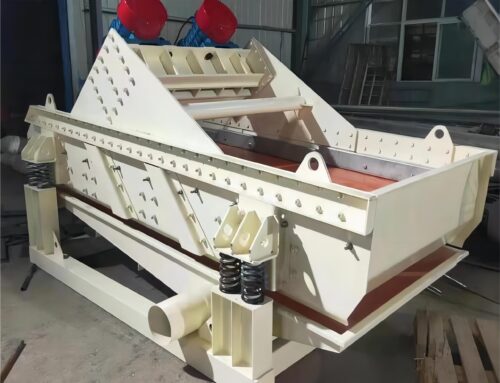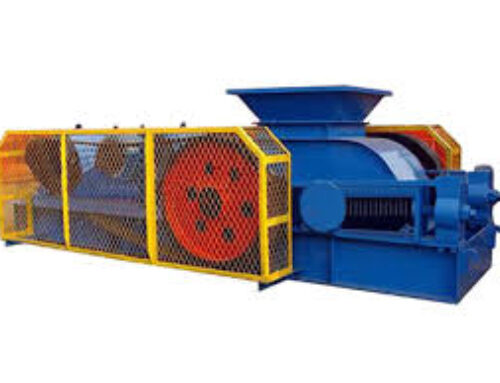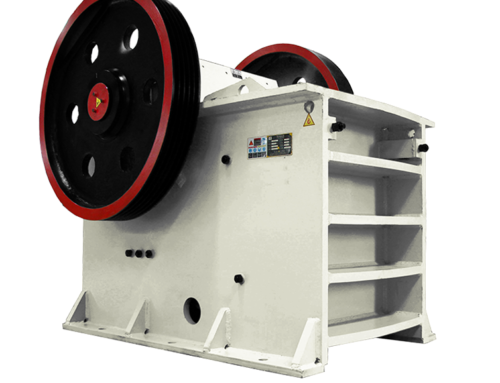In coal mine production, the feeder plays a vital role. It can transport coal and other materials evenly and stably to the next link, improve production efficiency and ensure the continuity of production. However, in the face of the many types of coal mine feeder on the market, how to choose the right one has become a problem faced by many coal mining enterprises.
一.Clear production requirements
First of all, you need to have a clear understanding of your coal mine production. Consider the following aspects:
1.Production scale
What is the annual production of the coal mine? This will determine the handling capacity of the feeder. If it is a large coal mine, you need to choose a feeder with large processing capacity and stable operation; while for small coal mines, you can choose a feeder with relatively small size to avoid over-investment.
2.Material characteristics
Coal particle size, humidity, viscosity and other characteristics will affect the choice of feeder. For example, for coal with large particle size, you need to choose the feeder with strong crushing ability; for coal with large humidity, you should choose the feeder that is not easy to be blocked.
3.Working environment
The working environment of coal mine is usually harsh, there are dust, humidity, high temperature and other problems. Therefore, the feeder should have good performance of dustproof, waterproof and high temperature resistance to ensure its normal operation in the harsh environment.
二.Understand the type of feeder
At present, the common coal mine feeder on the market mainly has the following types:
Vibrating feeder can achieve continuous and even feeding by vibrating the material to keep moving forward in the trough. Vibrating feeder can adapt to different particle size materials Whether it is large raw coal or small particles of coal after crushing, vibrating feeder can effectively transport. For materials of different granularity, only need to adjust the vibration frequency and amplitude and other parameters, can achieve good feeding effect. It can also adapt to materials with different humidity, and the vibrating feeder can work normally even with coal with large humidity. Its vibration effect can prevent the material from sticking on the trough and ensure the smooth flow of material.
Vibrating feeder makes the material do linear or parabolic movement in the trough body through the excitation force generated by the vibrating motor, so as to realise the feeding. It has the advantages of simple structure, reliable operation, uniform feeding, etc. It is suitable for coal of various particle sizes. However, the noise of vibrating feeder is large, need to take corresponding noise reduction measures.

Chain feeder can control the feeding quantity accurately through the movement of scraper driven by chain. In some occasions that require high feeding accuracy, such as the batching system of coal mine, chain feeder can accurately deliver different kinds of coal according to the set ratio to ensure the stability of product quality. It can adapt to the harsh working environment of coal mine, such as dusty, high humidity, large temperature changes. Its structure is relatively closed, which can effectively prevent the dust from flying and reduce the pollution to the environment and the hazard to workers’ health. Meanwhile, for high or low temperature environment, chain feeder can also work normally. Whether it is raw coal, fine coal or coal gangue and other different types of coal materials, chain feeder can carry out effective conveying. For materials containing large impurities, the strength of the chain and scraper can withstand a certain impact to ensure the normal operation of the equipment. In addition, the chain and scraper of chain feeder are usually made of high-strength materials, which have a long service life. Under normal use, there is no need to replace the parts frequently, which reduces the maintenance cost.

Reciprocating feeder through the crank linkage mechanism to drive the feed chute to do reciprocating motion, can convey a large amount of material in a short period of time. For large-scale coal mines or production occasions that require high output, reciprocating feeders can meet their requirements for material conveying capacity. For example, in the main transport system of some large coal mines, the reciprocating feeder can quickly transport coal from the bunker to the belt conveyor to improve the efficiency of the whole production process. Whether it is large lumps of raw coal or small particles of coal after crushing, the reciprocating feeder can transport them efficiently. The design of its feed chute can be adjusted according to the particle size and characteristics of the material to ensure that the material can pass through the feeder smoothly. For example, for large pieces of coal, the width and height of the feed chute can be appropriately enlarged to prevent material blockage. Reciprocating feeder can adapt to the harsh working environment of coal mine, such as dusty, high humidity, large temperature changes. Its structure is relatively sturdy and can withstand certain impact and vibration. At the same time, for high temperature or low temperature environment, reciprocating feeder can also work normally, with strong adaptability.

三.Consider the performance parameters
When choosing a coal mine feeder, you also need to pay attention to the following performance parameters:
1.Feeding capacity
Feeding capacity refers to the amount of material that can be transported by the feeder in a unit of time. According to the production scale of the coal mine and the characteristics of the material, choose the appropriate feeding capacity to ensure the continuity of production.
2.Feeding precision
Feeding accuracy refers to the error between the actual feeding quantity and the set feeding quantity of the feeder. For some occasions that require high feeding accuracy, such as batching system, the feeder with high feeding accuracy should be selected.
3.Power consumption
Power consumption refers to the power consumed by the feeder in the process of operation. Choose the feeder with low power consumption, which can reduce the production cost.
4.Reliability
Reliability refers to the ability of the feeder to fulfil the specified functions within the specified time and under the specified conditions. Selecting feeders with high reliability can reduce equipment failure and maintenance time and improve production efficiency.
When considering the selection of a suitable coal mine feeder, the conveying speed needs to be considered from a combination of the following aspects:
一.Aspects of production requirements
1.Production requirement
If the coal mine has a large production task, a higher conveying speed is needed to ensure that the material is conveyed within the specified time. For example, for large-scale coal mines, the daily coal production target is high, it is necessary for the feeder to have a high conveying speed to match the whole production process. On the contrary, if the production requirement is not high, the conveying speed can be reduced appropriately.
2.Subsequent process connection
Consider whether the conveying speed of the feeder can be well connected with the subsequent transport equipment, processing equipment and so on. If the processing capacity of the subsequent equipment is limited, the conveying speed of the feeder can not be too fast, so as not to cause material accumulation and blockage. For example, if the subsequent belt conveyor processing capacity of X tonnes per hour, then the feeder conveying speed should be adjusted to the appropriate level to ensure that the material can be smoothly transferred from the feeder to the belt conveyor for the next transport.
二.The material characteristics
1.Particle size
The particle size of the material will affect the conveying speed. Generally speaking, the flow speed of coal with large particle size on the feeder is relatively slow, and it is necessary to reduce the conveying speed appropriately in order to prevent the material from clogging and the wear and tear of the equipment. While the coal with smaller particle size can increase the conveying speed appropriately. For example, for large raw coal, the conveying speed may need to be controlled at a lower level to avoid jamming the outlet of the feeder or causing damage to the equipment; while for the small particles of coal after crushing, the conveying speed can be increased appropriately.
2.Humidity and viscosity
Coal with high humidity or strong viscosity is easy to adhere to the feeder, reducing the conveying efficiency. At this time, the conveying speed should be reduced to ensure that the material can pass through the feeder smoothly. If the coal has high humidity, it may cause the material to pile up on the feeder and affect the conveying speed. In this case, you can consider adopting the feeder with anti-sticking measures and reducing the conveying speed to ensure the normal conveying of materials.
三.Equipment performance
1.Feeder type
Different types of feeders have different conveying speed ranges. For example, vibrating feeders can usually achieve higher conveying speeds, while chain feeders have relatively slower conveying speeds. When choosing the type of feeder, it is important to determine the appropriate conveying speed according to the actual needs and characteristics of the equipment.
2.Motor power and transmission system
The motor power and transmission system of the feeder determine the maximum conveying speed it can provide. If the motor power is small, forcibly increasing the conveying speed may lead to motor overload, equipment damage and other problems. Therefore, the conveying speed should be reasonably determined according to the performance of the motor power and transmission system. At the same time, the stability and reliability of the transmission system will also affect the choice of conveying speed. If the transmission system is prone to failure, a more conservative conveying speed should be selected to reduce the occurrence of equipment failure.
In short, choosing the right coal mine feeder requires comprehensive consideration of factors such as production demand, feeder type, performance parameters and suppliers. Only in this way can we choose a feeder that meets the production demand, but also has good performance and reliability, to provide a strong guarantee for the efficient and stable operation of coal mine production.









